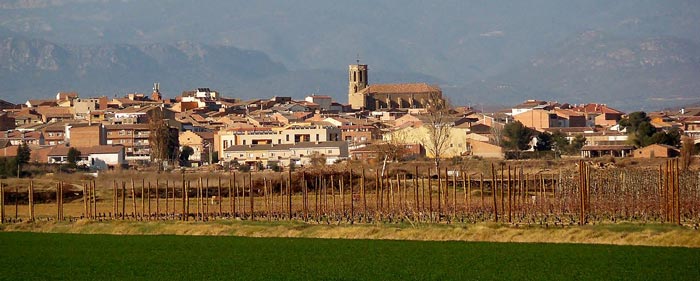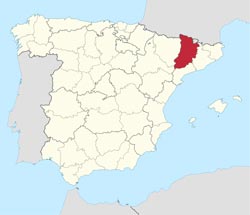Lérida in Lérida

The province of Lérida is one of Catalonia’s four provinces. Lérida is its name in Castilian, in the Catalan language its name is Lleida, which is also its official name.
It borders on the provinces of Gerona, Barcelona and Tarragona in Catalonia to the east and south, Huesca and Zaragoza in Aragón to the west and south, and to the north, France and Andorra.
One of Lérida’s claims to fame is the Arán Valley, a district in the Pyrenees where they speak their own language, Aranés.
In the northern part of the province, in the Pyrenees, you will find the Aiguestortes y Lago de San Mauricio national park, which is Catalonia’s only national park and famous for its outstanding beauty.
Lérida has both mountainous areas (its highest mountain is Pico d’Estats which with its 3,143 MASL is one of the highest peaks in the Pyrenees) and flatlands which have both fertile and arid zones. The former are rife with century- old olive trees, fruit trees, meadows and crop fields.
The weather in Lérida gets very hot in summer and cold in winter, and it has a well developed winter sports sector which attracts skiers and their like from all over the world.
Lérida can claim 432,866 (2018) souls as its citizens, 137,856 (2018) of whom call the capital of the same name their home.
Lérida city is situated in the south-western part of the province in the heart of the flatlands. It is Catalonia’s second most populated city after Barcelona. There is evidence of settlements in the area since the Bronze Age.
 When it was conquered by the Romans they named it Llerda, and all through the changes of history, from Romans to Visigoths, under the Moors and as part of the Kingdom of Aragón and finally a city in the Kingdom of Spain, that name has hardly changed at all no matter the language spoken in the different periods.
When it was conquered by the Romans they named it Llerda, and all through the changes of history, from Romans to Visigoths, under the Moors and as part of the Kingdom of Aragón and finally a city in the Kingdom of Spain, that name has hardly changed at all no matter the language spoken in the different periods.
The economy of Lérida is heavily dominated by the service sector, which employs 71.4% of the working population.
The city has become an increasingly visited ‘cultural tourist’ destination, and has also tried to build up a reputation as a congress city. In 2010 an ambitious project, La Lonja de Lénda, which is a concert and congress centre, was inaugurated.
La Lonja covers a surface of 37,500 m2, and comprises an auditorium with seating for 1,000 people as well as two additional meeting rooms that will hold 400 and 200 people respectively.
Tourists travelling around the city can enjoy the sights of La Seu Vella (Old Cathedral) from the 13th century, the Baroque style Catedral Nueva from the 18th century, the Castillo de la Suda, an old Mudejar castle and more than 35 fountains on roundabouts and in parks all over Lérida, which gets very hot and dry in summer.
In the old quarter, Centro Histórico, Cavallers street take you up to the Old Cathedral which overlooks the city from its high position on a hill in the centre of the city. The old city centre is notable for its vast range of shops and bars which has earned it the name ‘Eix Comercial’, the Commercial Axis. Here you find one of Europe’s longest shopping streets, over four km long, which is home to one of Spain’s highest escalators.
Lérida also has an international airport which has only two operators using it: Air Nostrum, which flies to Palma de Mallorca and Thomas Cook, which ran service to several British airports. At the time of going to print, the future of the airport is uncertain as Thomas Cook went into liquidation in 2019.
However, Lénda is readily accessible both by train, bus and road, so even while the airport issue is getting sorted, it is no problem to visit the city.


